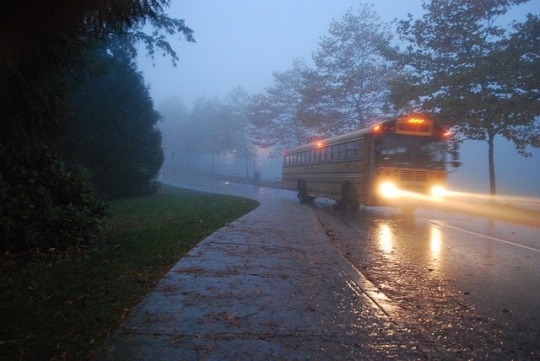#space weathering
Text
The data collected at Diamond contributed to a wider study of the space weathering signatures on the asteroid.
The Scientists did a chemical analysis of the astroid to see the elements and the element isotype it is made of with ZANES X-ray device. Then looked through an electron microscope ePSIC to see the grain of rock on the asteroid.
The building blocks of Ryugu are remnants of interactions between water, minerals, and organics in the early Solar System prior to the formation of Earth.
X-ray Absorption Near Edge Spectroscopy (XANES).
Diamond’s electron Physical Science Imaging Centre (ePSIC)
Without a protective atmosphere, space-exposed surfaces of airless Solar System bodies gradually experience an alteration in composition, structure and optical properties through Space Weathering
Solar wind irradiation and high-velocity micrometeoroid bombardment dominate space weathering for all airless bodies.
The mineralogy of most Ryugu grains investigated by (scanning) transmission electron microscopy is similar to that of CI chondrites, which are the most chemically primitive materials in the Solar System
#astronomy#asteroid#space weathering#science#science news#scientific research#space#outer space#solar system
4 notes
·
View notes
Text
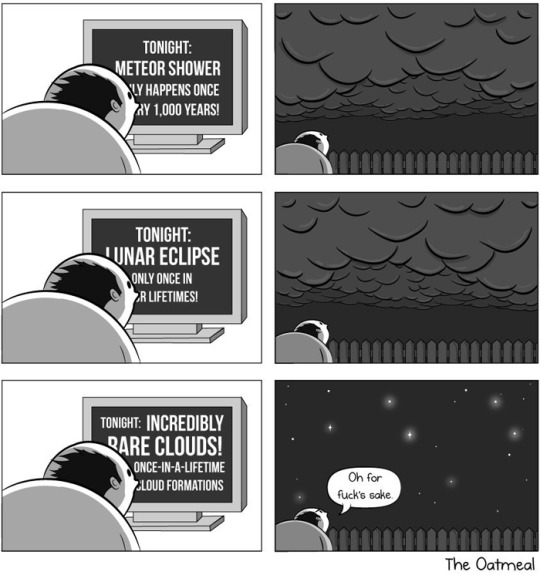
as always l The Oatmeal l ⬇txt-edited

#art#comics#space#space weather#celestial#celestial events#unlucky#aurora#aurora borealis#northern lights#humour
44K notes
·
View notes
Text
"With “green corridors” that mimic the natural forest, the Colombian city is driving down temperatures — and could become five degrees cooler over the next few decades.
In the face of a rapidly heating planet, the City of Eternal Spring — nicknamed so thanks to its year-round temperate climate — has found a way to keep its cool.
Previously, Medellín had undergone years of rapid urban expansion, which led to a severe urban heat island effect — raising temperatures in the city to significantly higher than in the surrounding suburban and rural areas. Roads and other concrete infrastructure absorb and maintain the sun’s heat for much longer than green infrastructure.
“Medellín grew at the expense of green spaces and vegetation,” says Pilar Vargas, a forest engineer working for City Hall. “We built and built and built. There wasn’t a lot of thought about the impact on the climate. It became obvious that had to change.”
Efforts began in 2016 under Medellín’s then mayor, Federico Gutiérrez (who, after completing one term in 2019, was re-elected at the end of 2023). The city launched a new approach to its urban development — one that focused on people and plants.
The $16.3 million initiative led to the creation of 30 Green Corridors along the city’s roads and waterways, improving or producing more than 70 hectares of green space, which includes 20 kilometers of shaded routes with cycle lanes and pedestrian paths.
These plant and tree-filled spaces — which connect all sorts of green areas such as the curb strips, squares, parks, vertical gardens, sidewalks, and even some of the seven hills that surround the city — produce fresh, cooling air in the face of urban heat. The corridors are also designed to mimic a natural forest with levels of low, medium and high plants, including native and tropical plants, bamboo grasses and palm trees.
Heat-trapping infrastructure like metro stations and bridges has also been greened as part of the project and government buildings have been adorned with green roofs and vertical gardens to beat the heat. The first of those was installed at Medellín’s City Hall, where nearly 100,000 plants and 12 species span the 1,810 square meter surface.
“It’s like urban acupuncture,” says Paula Zapata, advisor for Medellín at C40 Cities, a global network of about 100 of the world’s leading mayors. “The city is making these small interventions that together act to make a big impact.”
At the launch of the project, 120,000 individual plants and 12,500 trees were added to roads and parks across the city. By 2021, the figure had reached 2.5 million plants and 880,000 trees. Each has been carefully chosen to maximize their impact.
“The technical team thought a lot about the species used. They selected endemic ones that have a functional use,” explains Zapata.
The 72 species of plants and trees selected provide food for wildlife, help biodiversity to spread and fight air pollution. A study, for example, identified Mangifera indica as the best among six plant species found in Medellín at absorbing PM2.5 pollution — particulate matter that can cause asthma, bronchitis and heart disease — and surviving in polluted areas due to its “biochemical and biological mechanisms.”
And the urban planting continues to this day.
The groundwork is carried out by 150 citizen-gardeners like Pineda, who come from disadvantaged and minority backgrounds, with the support of 15 specialized forest engineers. Pineda is now the leader of a team of seven other gardeners who attend to corridors all across the city, shifting depending on the current priorities...
“I’m completely in favor of the corridors,” says [Victoria Perez, another citizen-gardener], who grew up in a poor suburb in the city of 2.5 million people. “It really improves the quality of life here.”
Wilmar Jesus, a 48-year-old Afro-Colombian farmer on his first day of the job, is pleased about the project’s possibilities for his own future. “I want to learn more and become better,” he says. “This gives me the opportunity to advance myself.”
The project’s wider impacts are like a breath of fresh air. Medellín’s temperatures fell by 2°C in the first three years of the program, and officials expect a further decrease of 4 to 5C over the next few decades, even taking into account climate change. In turn, City Hall says this will minimize the need for energy-intensive air conditioning...
In addition, the project has had a significant impact on air pollution. Between 2016 and 2019, the level of PM2.5 fell significantly, and in turn the city’s morbidity rate from acute respiratory infections decreased from 159.8 to 95.3 per 1,000 people [Note: That means the city's rate of people getting sick with lung/throat/respiratory infections.]
There’s also been a 34.6 percent rise in cycling in the city, likely due to the new bike paths built for the project, and biodiversity studies show that wildlife is coming back — one sample of five Green Corridors identified 30 different species of butterfly.
Other cities are already taking note. Bogotá and Barranquilla have adopted similar plans, among other Colombian cities, and last year São Paulo, Brazil, the largest city in South America, began expanding its corridors after launching them in 2022.
“For sure, Green Corridors could work in many other places,” says Zapata."
-via Reasons to Be Cheerful, March 4, 2024
#colombia#brazil#urban#urban landscape#urban planning#cities#civil engineering#green architecture#green spaces#urban heat#urban heat island effect#weather#meteorology#global warming#climate change#climate hope#climate optimism#climate emergency#climate action#environment#environmental news#city architecture#bicycling#native plants#biodiversity#good news#hope#solarpunk#ecopunk#hopepunk
15K notes
·
View notes
Text


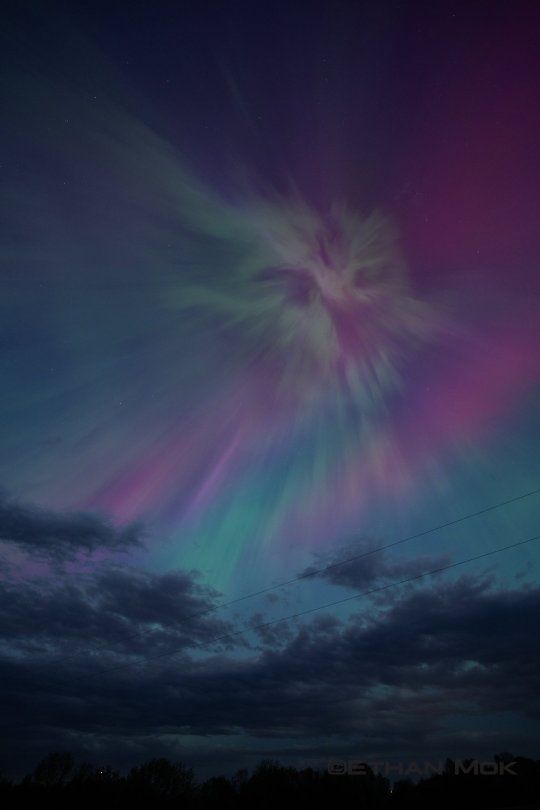
Monster Auroras during Solar Storm (x x x)
#aurora#aurora borealis#astrophotography#northern lights#night sky#stars#clouds#space#universe#astronomy#space weather
1K notes
·
View notes
Text






Hyperspace: ‘Our Final Frontier’ (2001)
#my scans#space#astronomy#galaxy#lightning#weather#spacecore#rainbowcore#aesthetic#photography#bbc#hyperspace#stars#2001#my%20scans
768 notes
·
View notes
Text
MAJOR potential for auroras over the weekend, even if you're super far south! First time this watch has been issued in NINETEEN YEARS. Also why was 2005 19 years ago.
594 notes
·
View notes
Text

Ah, the whole neighbourhood is sparkling ✨
#london#home#spaces#places#moody#winter#cold weather#grey#inspiration#phone photography#aesthetic#neighbourhood#city#pretty city
482 notes
·
View notes
Text

Cassini: looking Saturn in the eye (October 11, 2006)
#astronomy#astrophotography#krakenmare#solar system#outer space#nasa#space#saturn#cassini huygens#saturn weather#2000s#2006#Saturn South Pole
398 notes
·
View notes
Text
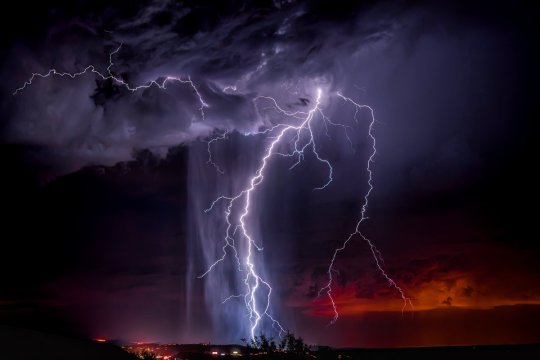

Let there be Peace l LoriGrace
#lightning#space#sky#night#stars#clouds#lightning bolt#weather#dark#photography#astrophotography#astronomy#solar system#earth#nature
2K notes
·
View notes
Text

Looking into the powerful eye of a hurricane! Beautiful but terrifying
#astronomy#nasa#astronomers#universe#astrophotography#nasa photos#nasawebb#astrophysics#outer space#hubble space telescope#national hurricane center#weather#space exploration#space station#space shuttle#spacecraft#space#james webb space telescope#space photography#space science#planetary science#science#beautiful earth#planet earth#planetary nebula#earth#astronauts#astro community#astro notes#astro observations
510 notes
·
View notes
Text
The solar eclipse of April 8th, as seen from the GOES-East weather satellite.
231 notes
·
View notes
Text
News from the Sun: The Return of Active (Sunspot) Region 3664
It’s still there, it’s approaching this side of the Sun again, and it’s kicking up a significant stink. The image below is from yesterday.

“Yesterday, it announced its return with an X2.8-class solar flare. Amateur astronomer Michael Karrer was watching the sun when the explosion occurred, and he captured [the above] picture of flying debris…
“I have not seen an explosion like this in my 40 years of observing the sun," says Karrer. "So fast, so far out into space! It was gigantic."
The explosion caused a deep shortwave radio blackout over east Asia and hurled a bright CME into space. A NASA model of the CME confirms that it will miss Mercury, Venus and Earth. None of the inner planets will be affected by this powerful event.
See the front page of SpaceWeather.com for more info on this. (Also check out this page at SpaceWeatherLive for active imaging of the flare from [I think] the LASCO instruments on the SOHO satellite.)
159 notes
·
View notes
Text
For anyone in northern North America: there is a chance you will be able to see the aurora borealis tonight (the evening of Friday May 10th 2024 through early morning of Saturday May 11th)!
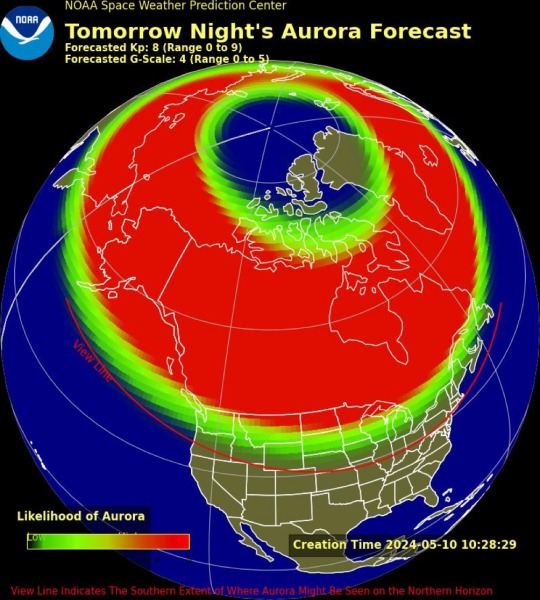
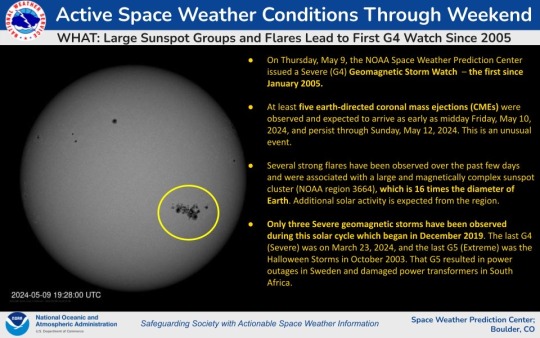
Keep in mind the red part of the first map is just your chance of seeing aurora directly overhead! Anyone north of the red line has a chance of seeing it on the horizon.
276 notes
·
View notes
Text

⋆2022⋆
#grunge#aesthetic#nostalgia#2014 grunge#gloomy#2014 tumblr#taken by me#liminal#liminal spaces#dreamcore#naturecore#winter#kidcore#blue#depersonalization#dereality#liminality#liminalcore#cold weather
398 notes
·
View notes
